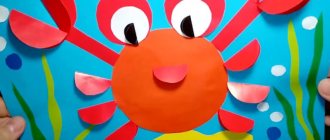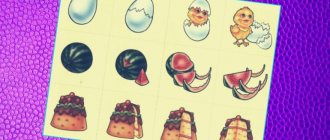Now mnemonics for memory development are used everywhere: in kindergartens, schools, universities, trainings, educational courses. Many believe that these are the latest techniques to avoid senility and excessive forgetfulness. However, few people know that this is an ancient Greek word (derived from the name of the goddess of memory Mnemosyne) and a science that Aristotle, Giordano Bruno, Alexander the Great, Julius Caesar, and Napoleon Bonaparte were fond of. So what are these methods of memorizing information, how effective are they in practice, and how to master them?
What it is
Mnemonics, or mnemonics, is a science that teaches the art of memorization using certain techniques and methods. Its task is to improve memory through associations. She rejects rote learning, which has already shown its ineffectiveness. Which adult remembers Tatyana's letter to Onegin by heart? Units! And all because this information has no significance for the majority and is not tied to objects or sensations.
Mnemonics is a technique for memorizing information when various objects and facts are closely associated with ideas in a person’s head. They can be visual, auditory or kinesthetic. This simplifies the memorization process and increases memory capacity. The simplest example: from childhood, everyone remembers the order in which the colors in the rainbow are located, thanks to the saying about the hunter and the pheasant. The initial letter of each color is associated with the initial letter of the words in that phrase. This is one of the main techniques of mnemonics. In this way, any information can be imprinted in memory.
In mnemonics, two objects of memorization are used - numbers and words. Even if the task is to remember a picture, it must first be mentally transformed through associations into a list or some kind of phrase.
Definition
Mnemonics (mnemonics) is a list of methods and techniques that help remember various types of information.
Mnemonics is based on the principle of visualizing abstract objects, which are replaced by specific concepts or figurative definitions. To easily and quickly memorize the necessary information, you need to associatively associate it with some visual idea, sound image or sensation. Associations - establishing connections with known images and phenomena.
Mnemonics techniques
To understand the basics of mnemonics, you first need to get acquainted with its main tools - techniques that allow you to remember almost any information.
By initial letters
We have already seen one example of this technique above. Used if you need to remember several words in a certain sequence (colors in a rainbow, planets by distance from the Sun). Their initial letters are taken and a phrase is invented that is completely unrelated to their topic, but the words in it begin with the same letters. When you need to reproduce information, you first remember the composed sentence, which serves as an excellent hint. There are ready-made templates for similar phrases for each individual sequence (examples will be below), but you can create your own.
Rhymes
Rhyming as a mnemonic technique is suitable for developing memory in creative people who love poetry and successfully rhyme words. Or you can use already prepared templates, as in the previous case.
Consonances
When you need to remember complex, long terms or foreign words, simple and understandable consonances are invented for them and stored in memory. For example, in medicine there are the concepts of “supination” and “pronation”, which refer to movements of the hands in different directions. In order not to forget them, students, future doctors, are offered similar sound equivalents - “she carried soup and spilled it.”
Visualization
A technique based specifically on visual associations. To remember any information, a certain picture is created in the head. For example, it’s easier for women to learn car brands: Jaguar is a big wild spotted cat, Audi is wedding rings, etc. This technique is especially good for developing visual memory.
Visual associations
Spatial imagination
The famous method of Cicero, which once again proves how ancient science mnemonics is. A person who puts this technique into practice treats his own memory as a separate space. It could be a museum, a library, storage facilities, or just a room. It has many shelves, chests, and compartments. It is recommended to present the memorized information in the form of an expensive vase or an ancient scroll and put it away in a certain place. When you need to reproduce it, an invented association arises in your mind, and it can be “extracted” from one or another suitcase without any problems.
Visual memory
A widely used method by Aivazovsky, which involves memorizing details. Another mnemonic technique that works to develop primarily visual and even photographic memory. One of the exercises is to closely but imperceptibly look at your interlocutor and then accurately reproduce him from memory, down to every button and mole.
Digital algorithms
These techniques are designed primarily to develop the memory of scientists and people associated with the exact sciences. Due to the nature of their work, they have to memorize long formulas and numbers. This can be done quite easily if you find some patterns or correlate them with familiar, memorable dates.
Tips for using mnemonics
- Start with the basics. Don't try to remember large amounts of data at once. Practice on single images, short lists of words, dates. Focus on the techniques that mnemonics offers for beginners: the method of stories or visualization. Increase the difficulty gradually, noticing progress at previous stages.
- For training, choose bright images; for children, always color ones. Such illustrations attract attention better, allow you to focus on details, and highlight more associative connections.
- Don't get overwhelmed. For children, 2 mnemonic tables per lesson are enough, no more than 9 squares per piece. A large amount of data causes boredom and in the form of a game.
- Make mnemonics classes varied. Change exercises, topics, memorize texts, illustrations and numbers.
- Remember that you need to exercise regularly. Perform 1-3 exercises daily, gradually limiting the time or increasing the load.
Methods
Since mnemonics did not appear yesterday, it includes various techniques, each of which offers the use of its own methods of memorizing information and memory training. Beginners may find them too complicated. In fact, if you understand their algorithm and master at least one, it will greatly simplify your life. We bring to your attention some of the most famous mnemonic systems.
Alphanumeric alphabet
The abbreviated name is CBA. Author unknown.
A technique according to which each number is associated with a specific letter through visual or auditory association. There are clearly written alphabets that need to be memorized and put into practice. You can create your own.
Alphanumeric code
The abbreviated name is BCC. The author is V. Kozarenko, a well-known specialist in mnemonics, who has written many textbooks on it.
The system of memorization and memory development proposed by Kozarenko is similar to the previous one. But here, first you just need to memorize the correspondence between numbers and paired consonant letters without any associations, and then use them in life. His BCC looks like this:
- 0 — m/n;
- 1 - g/f;
- 2 - d/t;
- 3 - farm;
- 4 - h/sh;
- 5 — p/b;
- 6 - sh/l;
- 7 — s/z;
- 8 - v/f;
- 9 - r/ts.
How to use. For example, you keep track of your income and expenses, you spent 2,056 rubles in a store, and you need to remember it in order to record it at home. You come up with a word that has a consonant corresponding to each number, and make a sentence out of them. 2 - children, 0 - ice cream, 5 - ice cream, 6 - chocolate. The children ate ice cream, it was ice cream and chocolate. There is no need to set a goal to come up with something conscious and logical. The more unusual the phrase, the better it will be remembered.
Other methods are also used in mnemonics:
- Fractional Number Code (FNC) - for those who deal with mathematics.
- Development of visual memory through visual associations. For example, each line of a memorized poem (a number in a formula) is “nailed” on a particular house (or tree) on the way to work or to the store and is repeated every time you walk along it.
- Method of auxiliary objects: if you put your finger on the Moon, you can understand whether it is growing or aging, depending on the resulting letter (P or S).
- Development of sound memory: chants (for learning Morse code), rhymes (“One Hundred Chinese Surnames”, Perelman’s dialogue about circles for memorizing the number Pi).
There are a large number of memory systems in mnemonics. You need to choose what suits you. If you have nothing to do with mathematics, KDC and Perelman’s dialogue are of no use to you. Look for those techniques that are relevant specifically to your life. Also focus on your memory type. You can first begin to perfect the one that prevails in you, and then develop the one that is worse.
Visualization techniques
When memorizing poems, each line is depicted with pictures.
Mnemonics techniques are based on the use of certain types of memorization . Of course, the most effective way to use any technology for raising and developing a child is through play. And mnemonics in this sense are a real storehouse of ideas.
- "Get a group together." The child is given separate pictures (for example, symbols of the seasons, clothes, types of activities) - he needs to group the pictures and explain why they are together.
- “Draw your impressions.” This technique perfectly expands the baby's vocabulary. And, by the way, it forms family traditions. Invite your little one to sketch their impressions of the day together, so that later they can tell what was good and bad about it. Each time, try to add one or more concepts and words that are new to your child.
- "Learn a poem." To make it easier to memorize poems, use visual tables in which each line is presented in the form of a picture or symbol. Try to always supplement the image with a word (if the baby can read) or a letter (if the child has not yet mastered this skill).
- "Memory Grid". Show your child the pictures, say what they are and turn them over. The child’s task is to name the depicted object, and then test himself by opening the mnemonic picture.
- "Stories with pictures." On the Internet you can find a lot of children's stories in which words are partially replaced by pictures. This way, the baby not only learns new words, but also develops the ability to focus on reading.
- "Photo memory". Show the child a picture, then remove it and give in return another one that differs from the first in some detail. For example, the first one shows a girl with a red bow, and the second one shows the same girl, but the bow is blue.
- "Day Night". Place a series of pictures in front of your child. Then say, “Night has come.” The baby covers his eyes with his hands, and at this time you hide one picture. The child’s task is to guess what is missing.
There are several methods of working with children over one year old whose speech is just beginning to develop.
- Tactile games. This mnemonic technique is intended for the smallest toddlers who do not yet speak. Its essence lies in the fact that pictures are replaced with objects. For example, to get acquainted with different round objects, put a pebble of a suitable shape, a tennis ball, a cap from a bottle or tube of cream, etc. in a bag. Ask your baby to take this or that object out of the bag by touch.
- Sound lotto. Play sounds for your child to match the pictures to. For example, “Who talks like this”: listen to the meow of a cat, the roar of a lion and ask the child to show a picture of the animal.
- Flannelograph. Cover the magnetic board with fabric and purchase a set of pictures with magnets (you can make them yourself by gluing a magnet to the back of the image). Tell your baby stories, pausing at certain parts. The little one’s task is to choose a suitable picture depicting the object you settled on and attach it to the flannelgraph.
Rules for using mnemonic techniques
You both need to be in the right mood to work with your baby.
As you know, children quickly lose interest in one activity or another. But mnemonics requires regular practice. Therefore, try to adhere to the following rules so that your baby does not get bored:
- offer to play only when the child is not hungry and does not want to sleep;
- do not interrupt the little one if he is already busy with something - it is better to wait for a more convenient opportunity;
- make classes traditional, preferably at the same time;
- do not rush the child, give him time to comprehend the task;
- help find a solution if you see that your child has stalled or is going in the wrong direction.
Kinds
If you plan to use mnemonics, keep one important point in mind. This is a whole science that has developed over several centuries. It has a rich history of development and there are many directions in it. In the same books dedicated to this art, they are often intertwined with each other. The authors offer sets of exercises, some of which relate to folk techniques, others to the classics. Such heterogeneity leads to the absence of a system.
Don't step on this rake. Choose one of the areas in accordance with your goals, objectives and individual characteristics and master it first. If things go well, then continue practicing using a different method.
Folk
The techniques of folk mnemonics are familiar to most people, as they have become firmly established in their lives, and many do not even suspect it. These are those rhymes with exceptions to the rules that they learned at school, the phrase about the hunter and the pheasant with the colors of the rainbow that set the teeth on edge. Road signs on the street, symbols on a computer desktop, the alphabet - these are all codes for developing memory in order to better remember and reproduce the necessary information faster.
Acrostic
Someone comes up with their own systems for learning a foreign language or chemical reactions, telephone numbers or significant dates - all this reflects the essence of everyday, or folk, mnemonics.
Classical
This is the very first system of mnemonics that has come down to us in written form. It dates back to 86 BC. e. At that time it was an integral part of rhetoric. Speakers used it to deliver long speeches accurately and without hesitation.
One of the most striking examples is Cicero's method. His opponent was Quintilian; he advocated for those people who had poorly developed visual and associative memory and who could not use Cicero’s technique. Quintilian proposed other alternatives to storing information, but was unable to formalize them into a separate system. However, it was they who later became the basis for the development of pedagogical mnemonics.
Pedagogical
The antipode of classical mnemonics. It finally took shape only in the 16th century, thanks to the Cambridge University teacher P. Ramus. This direction was closer to ordinary people, so it became widespread. There was no need to make complex visual associations here. Her main techniques were:
- repeated reading of the text and repeating it out loud;
- taking notes;
- redrawing illustrations;
- play activities;
- creation of didactics.
Methods of pedagogical mnemonics are still used in the modern education system.
Circus
The second name is variety. A narrow circle of people (it all started with circus troupes) creates its own system for coding the material. Anything can be used: language, gestures, facial expressions, intonation. The task is to transfer information from the assistant to the performer so cunningly that no one notices. These techniques are now actively used by scammers, telepaths, and psychics.
Sports
Since 1997, mnemonics competitions have been held annually in Cambridge. This direction has special specifics. Each participant is a guru in a specific area. Some reproduce binary numbers from memory, others recite poems 300 pages long by heart. As a rule, the winners end up in the Guinness Book of Records. The best in their field are determined by two indicators: memorization speed and volume.
Modern
The main representative of this direction is the Giordano mnemonic system. It is quite complex, based on scientific research in neurobiology about the brain and memory as a higher mental function. Here are just some of its provisions:
- development of electrical (neural) memory;
- mental operation “Connecting images”;
- the concepts of “Memorization Meaning” and “Accurate Information”;
- associations consisting of a foundation and auxiliary elements;
- system of internal stimulation of the cerebral hemispheres;
- multi-level schemes of reference images;
- constant training of memorization skills.
Mnemonic rule for remembering the number of days in a month using your knuckles
Don't remember what happened 5 minutes ago? Our short-term memory is to blame for this. What it is and ways to improve it is in our separate article.
Mnemonic techniques
- Eidotehnika (eido - image) - representation of an object outside the zone of perception, i.e. application of imaginative thinking. The exercise is aimed at creating images, objects, and natural phenomena.
- Associative chain technique . Words are connected in order, one after another, without skipping. The result is a story or fairy tale. In this game, children quickly remember a chain of words.
- The Cicero method is the placement of information in space. The essence of the method is the imaginary placement of images in a specific place.
- Method of transformation (transformation). Exercise promotes the development of memory and logical thinking. The words seem to flow from one another, something unites them.
- Support method (numeric-letter method). Children remember information by associating the meaning of certain words, sounds and numbers.
- “Croqueting” technique (from the French word croquis - drawing, sketch). Method of graphic associations. The essence is to recode the information received when drawing objects and natural phenomena.
Mnemonic table, mnemonic square, mnemonic track, collage - these are the teaching tools of the crocheting method.
Mnemonic tables are images containing information. They reduce learning time and at the same time develop memory, attention, and creative thinking. Help transform abstract images into concrete objects.
A mnemonic square is a card with an image of encoded information.
Mnemonic track is a sequential distribution of mnemonic squares according to which the child composes a story.
Collages are aids that perform the following tasks:
- teach (thematic collages);
- remember;
- form the skill of attention distribution.
Examples of practical application
Mnemonics are often used to memorize rules, formulas, and numerical values in various sciences. First of all, it's a great memory workout. Secondly, it is ideal for children to fully master the school curriculum in individual subjects. Those who were lucky enough to study with teachers familiar with these methods forever remembered the exception words in the Russian language, the Pythagorean theorem in geometry, and many other truths that ideally everyone should know by heart. If teachers do not have the skills to work with these techniques, parents can use them themselves to help their child learn.
Some of the most striking examples of mnemonic techniques in different academic disciplines will help you.
How to work with them. Almost all of them are based on the techniques of rhyming and consonance. So, all children need to do is memorize funny rhymes - and the rules themselves will be remembered almost for the rest of their lives. You'll see: they will read them to their grandchildren later.
Russian language
Mathematics
Other items
Similar techniques and methods of mnemonics exist for almost all academic disciplines and spheres of life:
- in music - to remember the sequence of notes;
- in traffic rules;
- in military affairs (formulas for hit accuracy taking into account side winds and target speed);
- in the transport sector (colors of navigation lights on board aircraft and ships);
- in telephony (numbers where numbers are replaced by letters corresponding to them on the telephone keypad).
Mnemonics are invaluable when learning a foreign language. It will make the task easier for schoolchildren, students, and adults. The OPSHACOM rule, for example, will make it much easier to understand and remember the canonical order of placing several adjectives before a noun in English.
Features of application
You can achieve results during mnemonics classes if you follow the basic rules for using the technique.
- Subsequence. You cannot start classes with difficult tasks. First they work with mnemonic squares, single images, then with mnemonic tracks and mnemonic tables.
- Rationing. Children are not shown more than two tables per day, and the number of images in each block should be no more than 9 pieces. Too much information is difficult for a child to absorb, so classes will be ineffective.
- Colorfulness. The pictures should interest the child in their appearance. They use bright colors, rich and expressive images. Tables in black and white will not be able to attract the attention of children and have the desired impact; they can only be used for children of older preschool age.
- Emotionality. Children should feel the positive energy of such activities.
- Diversity. Pictures or series of images for one lesson should be on different topics. Guys will quickly lose interest in the same type of training. It is also advisable to select tables that require different actions. For example, the first pictures help to remember the sequence of food intake, and the next group helps to tell about how insects move.
- No coercive measures: just a game. Classes can only be conducted when children are involved in the process with pleasure and interest. Everything should happen in a playful way. If the children's attention wanes, it is better to stop the lesson and continue at another time.
It is enough to adhere to these simple principles to achieve maximum learning results.
How to master
Firstly, you can take mnemonics lessons from specialists who are closely involved in applying its systems and techniques in practice. They can be found on the Internet: buy a training course, sign up for an online training, arrange lessons via Skype. There are a huge number of ways to master it.
Secondly, you can learn mnemonics yourself, at home. However, please note that this will be a longer journey than with a specialist. Some techniques may seem too complicated, and then there is a risk of giving up without developing your memory. Sometimes regularity and perseverance are not enough. When there is a teacher, there is a schedule of classes, assignments, etc. But here you only have to rely on self-discipline.
To learn mnemonics yourself, you need to start by choosing:
- directions (it is better for a beginner to choose folk or pedagogical, rather than modern or classical);
- the type of memory you will be developing;
- the technique that you can master best (rhymes, consonances, visual associations);
- the author's system in which you will work.
Next, you need to set aside a specific time for studying. It is best to do this immediately before bed. For beginners, these steps will be enough.
For different ages
For preschoolers
Mnemonics are actively used by educators and speech therapists for the development of speech in kindergarten with the help of mnemonic squares and mnemonic tracks. First, the child must name what is shown in the picture (visual associations are triggered and at the same time the vocabulary is replenished). Then he composes sentences and entire stories using several illustrations at once (the grammatical speech is enriched). The most complex one in this chain is the mnemonic table, which helps a preschooler learn a full-fledged poem.
For school age children
The education system is the most fertile field for the use of mnemonics. In order to assimilate huge amounts of information on various subjects, consonance and rhyme will be useful for developing the memory of schoolchildren, examples of which are in the tables above. Starting from the age of 10, experts advise parents and teachers to gradually teach children the methods of Cicero and Aivazovsky. You can also use other exercises: creating your own language, developing cuneiform, password recall and others.
For adults
For the development of memory for adults, it is already too late to learn poetry in order to remember the sequence of cases in the Russian language. They need more complex techniques, working with numbers, visual and auditory detail of what is happening. The pinnacle of perfection will be mastering the Giordano system or at least trying to take part in the correspondence round of the mnemonics competition.
Pros and cons of mnemonics
Mnemonics are actively used in teaching children. For example, one of the most famous phrases for studying the sequence in the color spectrum is “Every Hunter Wants to Know Where the Pheasant Sits.” It is she who helps to accurately tell how a rainbow “works.”
The role of methodology in the development of children:
- helps you remember information quickly and for a long time;
- improves memory and attentiveness;
- develops speech, expands vocabulary and horizons, teaches how to pronounce sounds and words correctly;
- forms logical and imaginative thinking;
- improves imagination, intellectual and creative abilities;
- develops character, teaches sociability, helps to overcome isolation and shyness.
When used correctly, mnemonics have very few disadvantages.
- At the initial stage of use, children have a small vocabulary, so it can be difficult for them to work using this method.
- There is no need to abuse the method and use it in cases where it is too easy to understand the properties and remember the signs - this hinders the child’s development.
- Sometimes it is not possible to use the technique. For all-round development, it is necessary to teach the child to learn information mechanically; this skill will also be useful in the future.
The human brain consists of two hemispheres. The left is responsible for logic and speech, and the right helps to perceive different colors and form images using the imagination. When using mnemonic techniques, both halves are activated simultaneously. As a result, thought processes bring maximum benefit in the form of acquired knowledge.
The best books on mnemonics
- Ziganov M. Mnemonics. Memory based on visual thinking.
- Zyablitseva M. A. Instant memorization techniques. Scout mnemonics.
- Kozarenko V. A. Mnemonics - memory development.
- Kurt W. Mnemonics.
- Sheikh-Zade Yu. R. Supermemory is an ancient technique of mnemonics.
If you are faced with the task of developing memory, be sure to use one of the areas of mnemonics. You can start with the simplest techniques, and then understand and master more in-depth and complex ones. You will be surprised at how much information you can own and use it to your advantage.
What is mnemonics
The concept is associated with a system that helps to assimilate large amounts of information. These are exercises that help evoke associations and remember. Associations can be kinesthetic (tactile), visual (visible), auditory (auditory).
How to remember a date from history?
Imagine that this is the day and month of “your acquaintance” with a historical character. Or the day when “you visited” the site of a historical event.
Everyone can associate differently. The task of parents is to teach the child to find the association on his own based on examples and remember it. And then reproduce it in memory.










